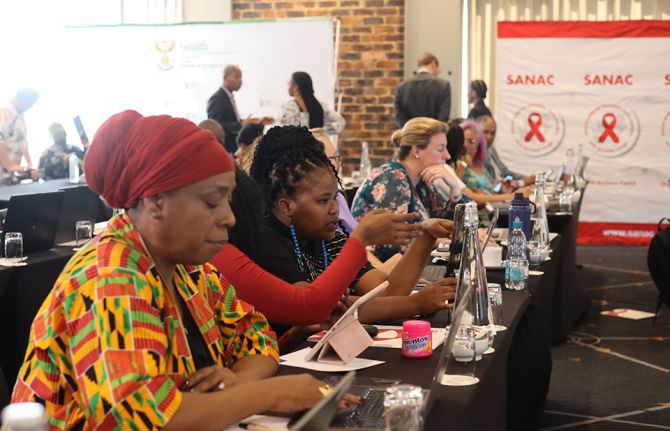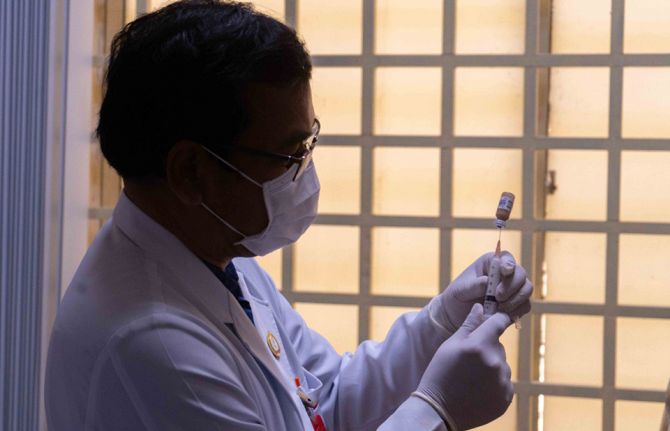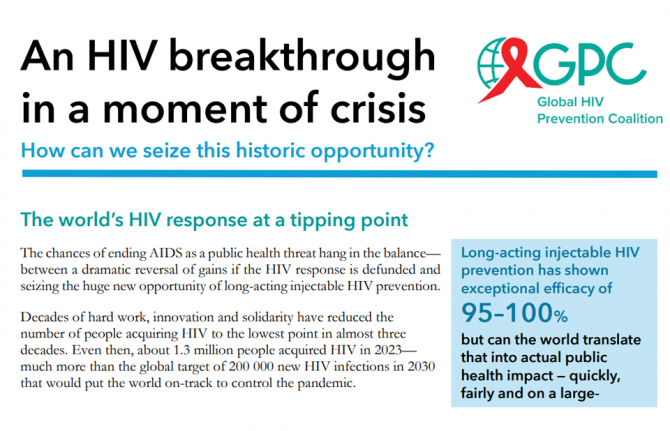
Feature Story
Empowering women to protect themselves: Successes in female condom programming
08 August 2011
08 August 2011 08 August 2011
Cover of the UNFPA report: HIV prevention gains momentum: Successes in female condom programming.
Credit cover photo: Jack Hollingsworth/Blend
Ensuring that high quality condoms are widely available, either free or at an affordable price, is fundamental to a pragmatic and effective AIDS response. In a recently published report, the United Nations Population Fund (UNFPA) focuses on the increasing use of female condoms and highlights how millions of women around the world are now using this method to protect themselves against HIV.
HIV prevention that women can control
Titled HIV prevention gains momentum: Successes in female condom programming, the report looks at the issue through the prism of national case studies. These pinpoint how a variety of partners have come together, pooling ideas, expertise and resources, to empower women to access female condoms. This is crucial as HIV is the leading cause of death among women of reproductive age worldwide, and in sub-Saharan Africa 60 percent of all people living with HIV are female.
“Girls and women remain vulnerable to HIV and we have to summon the courage and political will to empower and protect them,” said Dr Babatunde Osotimehin, UNFPA’s Executive Director, quoted in the report’s foreword. “We have to invest in practical tools that women can use to protect themselves, such as the female condom,” he added.
Concerted efforts appear to have an impact: the report states that access to female condoms has increased dramatically over the last few years, with 50 million used in 2009. Today condoms are available in more than 90 countries through public health programmes. However, availability and price remain issues as the female condom can cost as much as one US dollar per unit and, despite considerable progress made, in 2009 only one female condom was available for every 36 women worldwide.
Stories highlighted in Successes in female condom programming range from coffee ceremonies in Ethiopia where married women help each other break taboos surrounding condoms, to networks of hairdressers and small businesspeople in Guyana, Malawi and Zimbabwe encouraging their clients to use them.
Innovative distribution outlets
For example, Langton Ziromba owns a small barbershop in Zimbabwe’s capital, Harare, and in addition to giving haircuts and shaves he also promotes and sells female condoms to his male customers. Mr Ziromba is one of around 70 barbers and 2000 hairdressers in the country trained by Population Services International (PSI), a UNFPA partner. Such activity, the report outlines, has contributed towards the growth in sales of female condoms through social marketing and public sector programmes from one million in 2005 to more than five million in 2009.
Other countries, such as Myanmar, have focused on key populations like sex workers and men who have sex with men. In 2006 UNFPA entered into an agreement with the Myanmar government and PSI to provide 700,000 female condoms to these groups over a three year period. According to the report, progress was “remarkable” and in the first year of the initiative use of female condoms among sex workers nearly doubled from 20 percent in 2004 to 36 percent in 2006.
Building national capacity for programming
The publication also draws attention to the push to increase the capacity of national governments and their partners to implement comprehensive condom programming, of which female condoms are an integral part, with a view to outside assistance eventually being phased out.
Since 2002 UNFPA has been the lead agency for the UN Inter-Agency Task Team on Comprehensive Condom Programming and plays a key role in discussions on funding, technical assistance and regional and global support. It also works with governments and partners to stimulate demand and facilitate the design and implementation of culturally appropriate condom programming so that individuals around the world are empowered to protect themselves against HIV.



